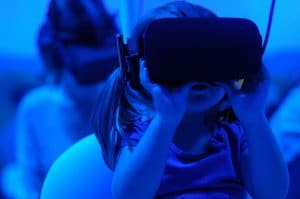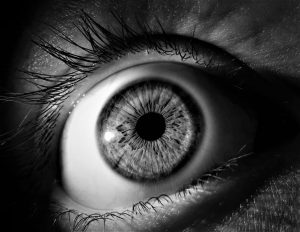One challenge that churches are always iterating on is how to better connect with visitors and members. Additionally, with safety concerns increasing across the world during religious worship services, churches must continue to increase security measures in order to protect attendees. For these reasons, churches need to start making better use of developing facial recognition technology.
Facial recognition tech is increasingly being used in practical daily applications. It is utilized in everything from newly developed airport security systems to simply logging onto one’s smartphone. Because of such mainstream popularization, the tech is also becoming increasingly affordable.
In my 15-plus years of working in congregational ministry settings, one thing that I’ve observed the church constantly addressing is our approach to welcoming visitors. The challenge is that once a church gets over several hundred members, it becomes increasingly difficult for volunteers to identify if someone walking through the door is brand new or has been a member for the last 10 years. This puts the volunteer in a precarious situation because, depending on how nuanced their approach is in greeting, they risk missing an opportunity to properly connect with a new prospect or potentially offending a dedicated member.
The challenge is that once a church gets over several hundred members, it becomes increasingly difficult for volunteers to identify if someone walking through the door is brand new or has been a member for the last 10 years.
Statistically speaking, one of the most consistent factors in gaining membership through visitors is making new attendees feel welcome. Over the years, I’ve experienced and implemented numerous systems to help with this process in the churches I’ve served. I’ve trained people, designed “connect cards,” and urged sustained investment in data collection systems like ACS or Shelby.
From practical experience, I can attest that the amount of time and money spent by churches investing in processes like these is immense. The reason for this is that membership gains and acculturation are critical for ministry success. That is why, instead of working harder, churches should be working smarter by using emerging facial recognition technology.

The obvious place to begin such implementation is in churches over 2000 members that have the resources and initiative to seek intentional growth. Additionally, facial recognition tech may be advantageous for churches that have many entry/exit points, that are located in highly populated urban areas, or that would be deemed security risks for any number of reasons. By investing in such tech upfront, churches could reduce potential personnel costs by creating data systems that aggregate information pertinent to strategic goals.
This doesn’t mean that volunteers still won’t be needed to serve as greeters; it just means that now they will have the data in hand to address them appropriately. A simple facial recognition scan at the church’s entry points will allow greeters to immediately know if someone is a member or a guest so that they can then act accordingly. Companies like Churchix provide current examples as to how this can presently work.
Using facial recognition systems in church could also help greeters to welcome members by name. In the case of an unrecognized person, the greeter could usher the individual through a quick touch screen registration process. Guests could expedite this process by scanning an ID card or even by wirelessly transferring info from their phone or chipped data ID.
Because new visitors are immediately recognized, churches can automate systems to send them real time data (campus maps, worship bulletins, opportunities to serve, church app to download) before the person even gets to their seat.
This information can then be sent into the church’s data system instantaneously and the church’s welcome process could be initiated. Lists can be automatically generated for staff follow-up. Welcome emails and letters could be automatically mailed or printed depending on the church’s protocol.
Because new visitors are immediately recognized, churches can automate systems to send them real time data (campus maps, worship bulletins, opportunities to serve, church app to download) before the person even gets to their seat. These guests can get smart phone invites to after-worship welcome events or follow-up gatherings. These extra engagement opportunities exponentially increase the potential for the visitor to get further involved.
Additionally, facial recognition systems can track member attendance. This is helpful because it can help church staff to know when members may need attention. Actively knowing when someone hasn’t attended is often an important lead for active pastoral care.
Beyond this, though, facial recognition systems may also one day be connected to law enforcement databases to identify potentially dangerous or wanted individuals who may seek to do harm to the worshiping population. Such tech systems could serve as deterrents to criminals because they would know that their capture would be imminent were they to go through them. Most large churches have security details that could immediately apprehend any threats that may arise. These systems could also provide an added layer of security for the protection of children.
Overall, the potential upsides to facial recognition systems at churches make them likely candidates for implementation in the near future. As these systems become more affordable, it is likely that we will see more churches utilizing this tech. The result will be churches that provide better care and security for both their visitors and their members.
Reality Changing Observations:
1. What reservations, if any, would you have with churches using facial recognition technologies?
2. What other practical uses do you think could be implemented by churches using facial recognition technology?
3. What other technologies do you think might be helpful to pair with facial recognition technologies in churches, and why?





